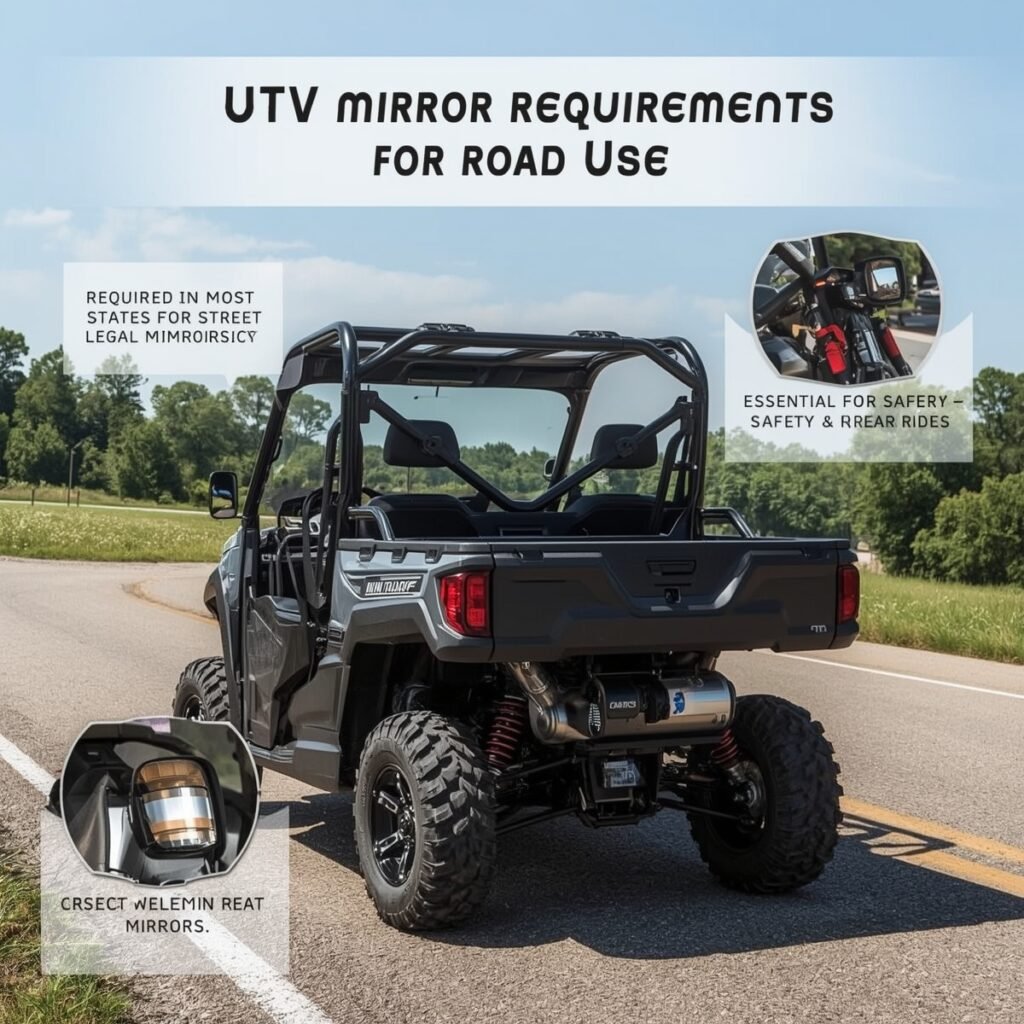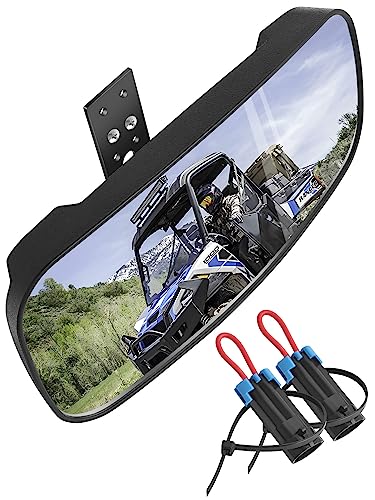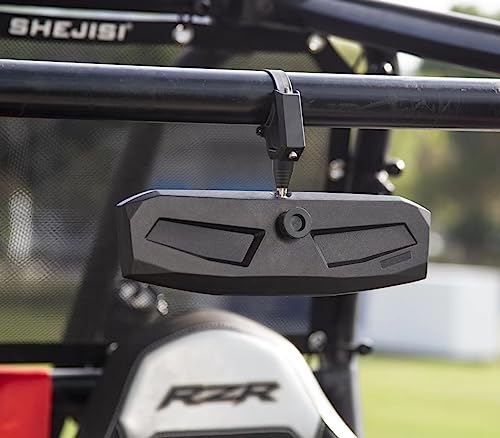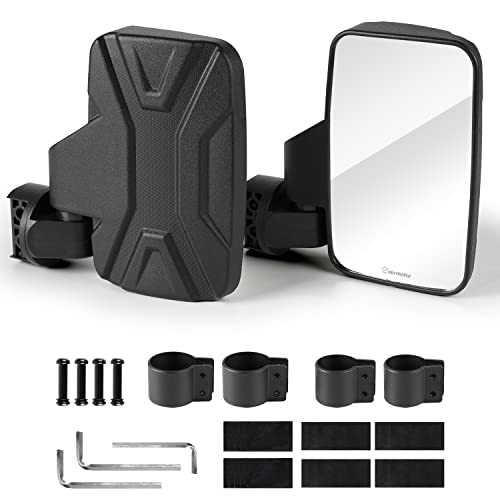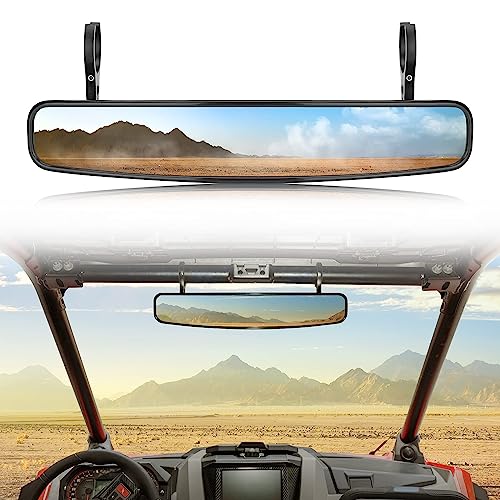As off-road enthusiasts, the thrill of hitting the trails in our UTVs is unmatched. However, there are times when our adventures take us beyond the dirt paths and onto public roads. Whether you’re connecting trails, heading to a gas station, or simply enjoying a scenic drive, understanding and complying with UTV mirror requirements for road use is not just a suggestion—it’s a legal necessity and a critical safety measure. I’ve personally experienced the blind spots and limited visibility that come with off-road-focused UTVs, and the importance of proper mirrors for road safety cannot be overstated.
This comprehensive guide will delve into the essential aspects of UTV mirrors for street legality. We’ll explore the different types of mirrors, state-specific legal requirements, and practical tips for choosing and installing the right mirrors for your UTV. My goal is to equip you with the knowledge to ensure your UTV is not only compliant with road regulations but also provides you with the best possible visibility for a safer and more confident ride. Let’s ensure you have a clear view of what’s behind you!
Why Mirrors are Crucial for Road-Legal UTVs: Safety and Compliance
When it comes to making your UTV street legal, understanding UTV mirror requirements for road use is paramount. Mirrors are not just an accessory; they are fundamental safety devices that provide critical visibility and are often mandated by law. Ignoring these requirements can lead to fines, accidents, and a compromised riding experience.
1. Enhanced Situational Awareness
Just like in a car, mirrors on a UTV allow you to monitor traffic behind and to the sides of your vehicle. This is especially important for UTVs, which often have limited rear visibility due to their design, cargo, or passengers. Being aware of your surroundings, including other vehicles, cyclists, or pedestrians, is crucial for safe lane changes, turns, and general navigation on public roads. I’ve found that having a clear view of what’s behind me significantly reduces stress and increases my confidence when transitioning from trail to pavement.
2. Legal Compliance and Street Legality
One of the primary reasons for installing mirrors is to meet the legal requirements for street-legal UTVs. While specific laws vary by state, almost all jurisdictions that permit UTVs on public roads require at least one, and often multiple, mirrors. Common requirements include:
- Rearview Mirror: Typically, a single center-mounted rearview mirror is required to provide a view of the traffic directly behind the vehicle [1].
- Side Mirrors: Many states also mandate side mirrors (one on each side) to provide a broader field of vision and eliminate blind spots [2].
Failing to meet these UTV mirror requirements for road use can result in citations, fines, and even impoundment of your vehicle. It’s essential to research your specific state’s laws before hitting the road.
3. Safe Lane Changes and Merging
On multi-lane roads, mirrors are indispensable for safely changing lanes or merging into traffic. They allow you to check for vehicles in your blind spots, preventing dangerous maneuvers that could lead to collisions. Given the often-smaller size and different handling characteristics of UTVs compared to traditional vehicles, accurate mirror use is even more critical.
4. Backing Up and Maneuvering in Tight Spaces
Mirrors greatly assist when backing up, whether it’s into a parking spot, a trailer, or navigating a tight trail section. They provide a perspective that’s impossible to get by simply turning your head, helping to prevent accidents and damage to your UTV or surrounding property.
5. Communication with Fellow Riders
In group rides, mirrors can be used to keep track of your riding partners, ensuring no one gets left behind and allowing for non-verbal communication. While not a legal requirement, it’s a practical benefit that enhances the group riding experience.
In essence, investing in and properly utilizing mirrors for your UTV is a non-negotiable step towards responsible and safe road use. They are a small addition that makes a monumental difference in your ability to see, react, and comply with the law.
[1] “You’ll most likely need a rear-view mirror and a set of side-view mirrors to make your machine legal for road riding.” – SuperATV Off-Road Atlas, How to Make an ATV or UTV Street-Legal.
[2] “Mirrors are required by law because they help spot cars behind you and make turns. Your SxS must have at least one rearview mirror and side mirrors.” – Kemimoto, Can A Side-By-Side Be Street-Legal?
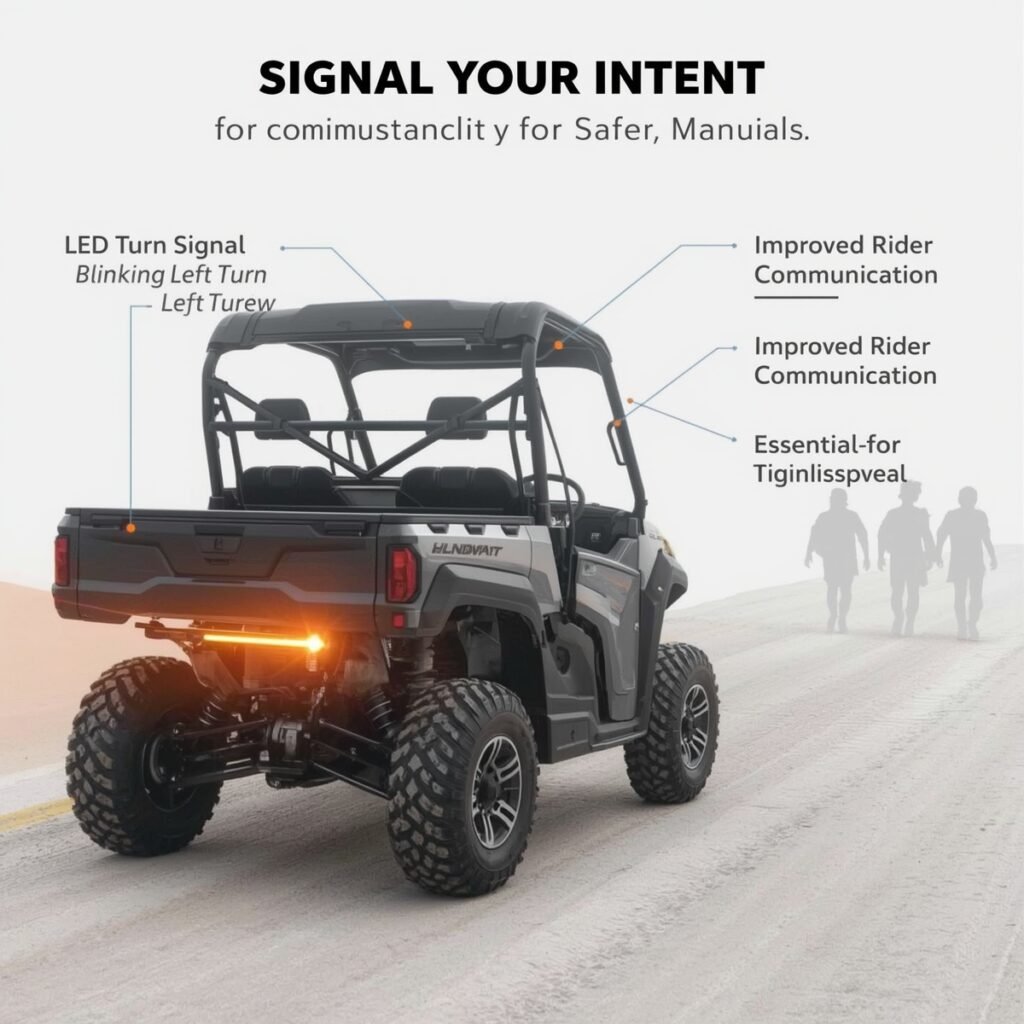
Types of UTV Mirrors for Road Use: Choosing Your View
When fulfilling UTV mirror requirements for road use, you’ll find a variety of mirror types designed to enhance visibility and meet legal standards. Each type offers distinct advantages, and often, a combination of mirrors provides the most comprehensive view.
1. Side Mirrors
Side mirrors are mounted on the roll cage or doors of your UTV, providing a view of the areas directly to the sides and slightly behind your vehicle. They are crucial for checking blind spots before changing lanes or making turns. Key considerations for side mirrors include:
- Mounting: Most side mirrors clamp onto the roll cage, making installation relatively straightforward. Some are designed to integrate with doors or specific UTV models.
- Adjustability: Look for mirrors that offer ample adjustability to accommodate different driver heights and seating positions. This ensures you can optimize your field of vision.
- Durability: Off-road environments are harsh. Choose side mirrors made from robust materials like billet aluminum or high-impact ABS plastic, with shatter-resistant glass. Breakaway designs are also beneficial to prevent damage from impacts with branches or obstacles.
- Convex vs. Flat: Convex mirrors offer a wider field of view, making objects appear smaller and further away, which is excellent for situational awareness. Flat mirrors provide a true-to-size image but with a narrower field of view. Many riders prefer convex side mirrors for their expanded perspective.
2. Rearview Mirrors (Center Mirrors)
A center-mounted rearview mirror provides a direct view of what’s behind your UTV. This is often the primary mirror required for street legality. When selecting a rearview mirror:
- Mounting: These typically mount to the roll cage or the top of the windshield frame. Ensure the mounting system is secure and vibration-resistant to maintain a clear image.
- Panoramic vs. Standard: Panoramic rearview mirrors offer a much wider field of view than standard flat mirrors, allowing you to see more of the area directly behind your UTV and even some of the side blind spots. While they can distort depth perception slightly, the increased visibility is often preferred for UTV use.
- Size and Clarity: Choose a mirror large enough to provide a useful view without obstructing your forward vision. The glass should be high-quality for clear, undistorted reflections.
3. Combination Mirror Systems
For the most comprehensive visibility and to fully meet UTV mirror requirements for road use, many riders opt for a combination of mirrors. This typically involves a center rearview mirror paired with two side mirrors. This setup provides a complete 360-degree view around your UTV, minimizing blind spots and maximizing safety on public roads.
4. Specialty Mirrors
Beyond the standard types, some specialty mirrors offer additional features:
- Lighted Mirrors: Some side mirrors come with integrated LED lights, which can serve as additional turn signals or auxiliary lighting for enhanced visibility, especially at night.
- Breakaway Mirrors: Designed to fold in or break away upon impact, these mirrors prevent damage when encountering tight trails or obstacles. They are a practical feature for off-road enthusiasts who also use their UTVs on the road.
Choosing the right mirrors is a balance between legal compliance, desired visibility, and the specific demands of your riding style. Investing in quality mirrors is an investment in your safety and the longevity of your UTV.
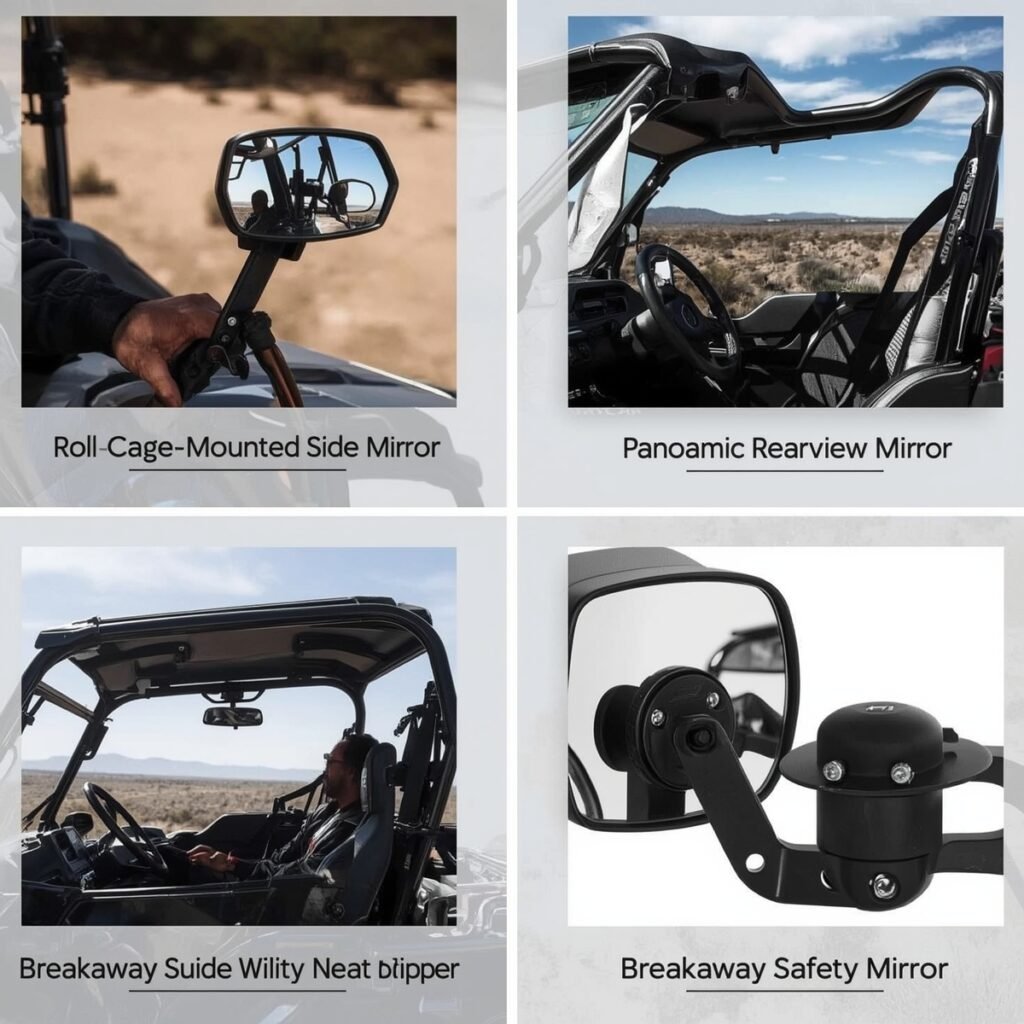
UTV Mirror Laws by State: Navigating the Legal Landscape
Understanding and adhering to UTV mirror requirements for road use is crucial for legal compliance, but it can be a complex task as laws vary significantly from state to state. While it’s always best to consult your local Department of Motor Vehicles (DMV) or law enforcement for the most current and specific regulations, here’s a general overview of what you might encounter.
Common Mirror Requirements:
- One Mirror: Some states have lenient laws, requiring only a single mirror that provides a clear view to the rear. This could be either a rearview mirror or a driver’s side mirror.
- Two Mirrors: A more common requirement is for two mirrors. This often means one on the driver’s side and a center rearview mirror. Alternatively, it could be two side mirrors.
- Three Mirrors: The strictest states may require three mirrors: one on each side and a center rearview mirror, similar to a standard passenger car.
State-by-State Variations:
It’s impossible to list every state’s specific laws here, as they are subject to change. However, here are some examples to illustrate the diversity of regulations:
- Arizona: Known for being UTV-friendly, Arizona generally requires at least one rearview mirror.
- Utah: Another state with a large off-road community, Utah often requires both a rearview mirror and at least one side mirror.
- California: California has stricter regulations, typically requiring both a driver’s side mirror and a rearview mirror.
- Texas: Laws can vary by county, but generally, a rearview mirror and a driver’s side mirror are required for road use.
The Importance of Local Ordinances:
In addition to state laws, it’s crucial to be aware of local ordinances. Some cities, counties, or specific trail systems may have their own unique rules regarding UTV equipment, including mirrors. Always check with local authorities before riding in a new area.
How to Find Your State’s Laws:
- Official DMV Website: Your state’s DMV or equivalent agency is the most reliable source for vehicle equipment laws. Search for terms like “UTV street legal,” “off-highway vehicle regulations,” or “vehicle mirror laws.”
- Local Law Enforcement: Contact your local police department or sheriff’s office. They can provide practical guidance on what they look for during traffic stops.
- Online Resources: Websites like Dirt Legal and UTV Driver often compile state-by-state guides, which can be a good starting point, but always verify the information with official sources [3].
A Note on Federal Standards:
While state laws are the primary concern for UTVs, it’s worth noting that federal motor vehicle safety standards (FMVSS) exist for passenger cars. While UTVs are not typically subject to these standards, some states may reference them in their own laws. For example, some states may specify that mirrors must provide a view of at least 200 feet to the rear, a standard derived from federal regulations.
Navigating the legal landscape of UTV mirror requirements for road use requires some research, but it’s a necessary step to ensure you’re riding legally and safely. Taking the time to understand and comply with your local laws will save you from potential fines and headaches, allowing you to enjoy your UTV on both trails and roads with peace of mind.
[3] “We mentioned earlier that researching this guide involved analyzing the street legal UTV parts laws in all 50 states plus Washington, D.C. and 5 US territories.” – Dirt Legal, These Are the Parts You Need to Make a UTV Street Legal.
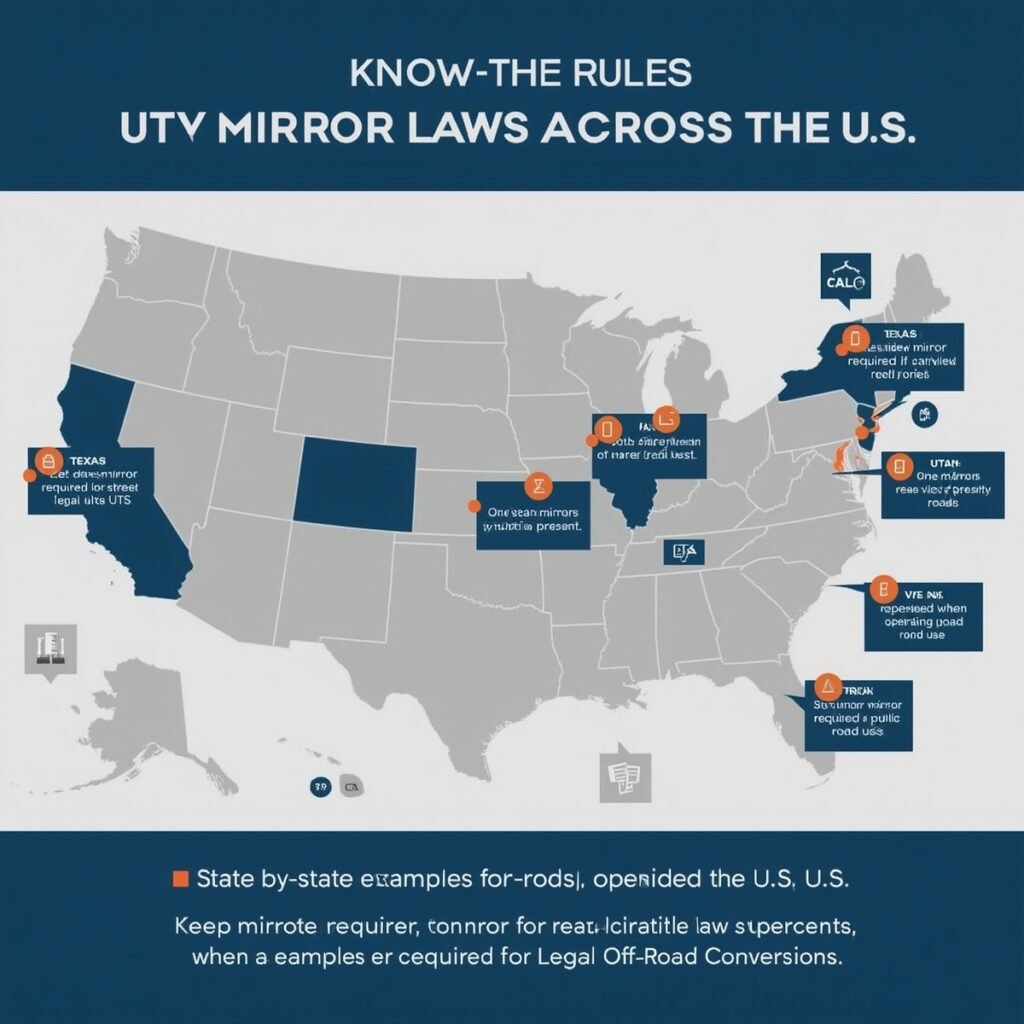
Conclusion: Clear Views, Safe Journeys
Meeting UTV mirror requirements for road use is a fundamental step towards responsible and safe operation of your side-by-side on public roads. Beyond legal compliance, proper mirrors significantly enhance your situational awareness, reduce blind spots, and allow for safer maneuvers in traffic. Whether you opt for robust side mirrors, a wide-angle rearview mirror, or a combination of both, the investment in quality mirrors is an investment in your safety and the safety of those around you.
I’ve personally found that having the right mirrors transforms the road-going experience in my UTV, making it less stressful and far more enjoyable. By understanding your state’s specific laws, choosing durable and effective mirrors, and ensuring they are properly installed and maintained, you can confidently navigate both the trails and the pavement. So, equip your UTV with the visibility it deserves, and enjoy clear views on all your adventures!
What kind of mirrors do you use on your UTV for road use?
Share your experiences and recommendations in the comments below! 👇🏼

